Currently Empty: $0.00
Tai Chi Knowledge
Essential tai chi moves for beginners and experts
Tai chi is like moving meditation. It’s an ancient Chinese martial art that’s great for both body and mind. No matter if you’re just starting out or have been doing it for years, knowing the basic tai chi moves is key. Here we’ll answer 12 common questions about tai chi moves, with tips to help you get better at this lovely practice.
Table of Content
- What are basic tai chi moves?
- How many tai chi moves exist?
- Which tai chi moves improve balance?
- Are there tai chi moves for back pain?
- What tai chi moves reduce stress?
- Can tai chi moves help with arthritis?
- Which tai chi moves build strength?
- How do tai chi moves differ by style?
- What are advanced tai chi moves?
- Are there tai chi moves for weight loss?
- How to sequence tai chi moves properly?
- Can tai chi moves be modified for injuries?
- What are common mistakes in tai chi moves?
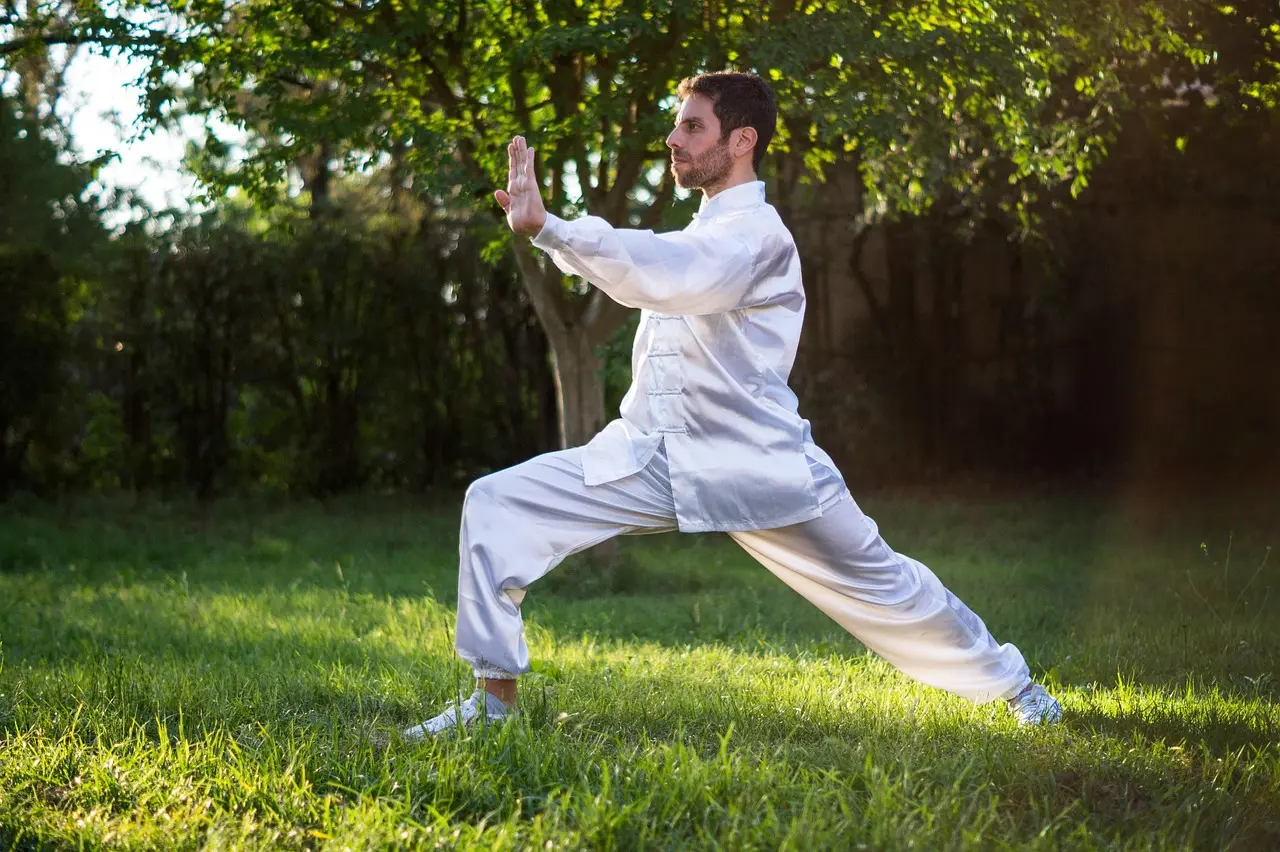
What are basic tai chi moves?
The basic moves are the building blocks of tai chi.
Newbies usually start with Commencement Form to begin each session, and Grasp the Sparrow’s Tail – that’s four moves in one: ward off, roll back, press, and push. They may have fancy names, but they really help with balance, coordination, and energy.
My teacher Master Chen, who’s done tai chi for 30 years, showed me these moves. I couldn’t believe how tough slow movements could be! The trick is keeping good posture – picture a string lifting your head while your feet stay planted. Lots of beginners, me included, pay too much attention to arms and forget about legs. Don’t forget – the real power comes from your legs and waist!
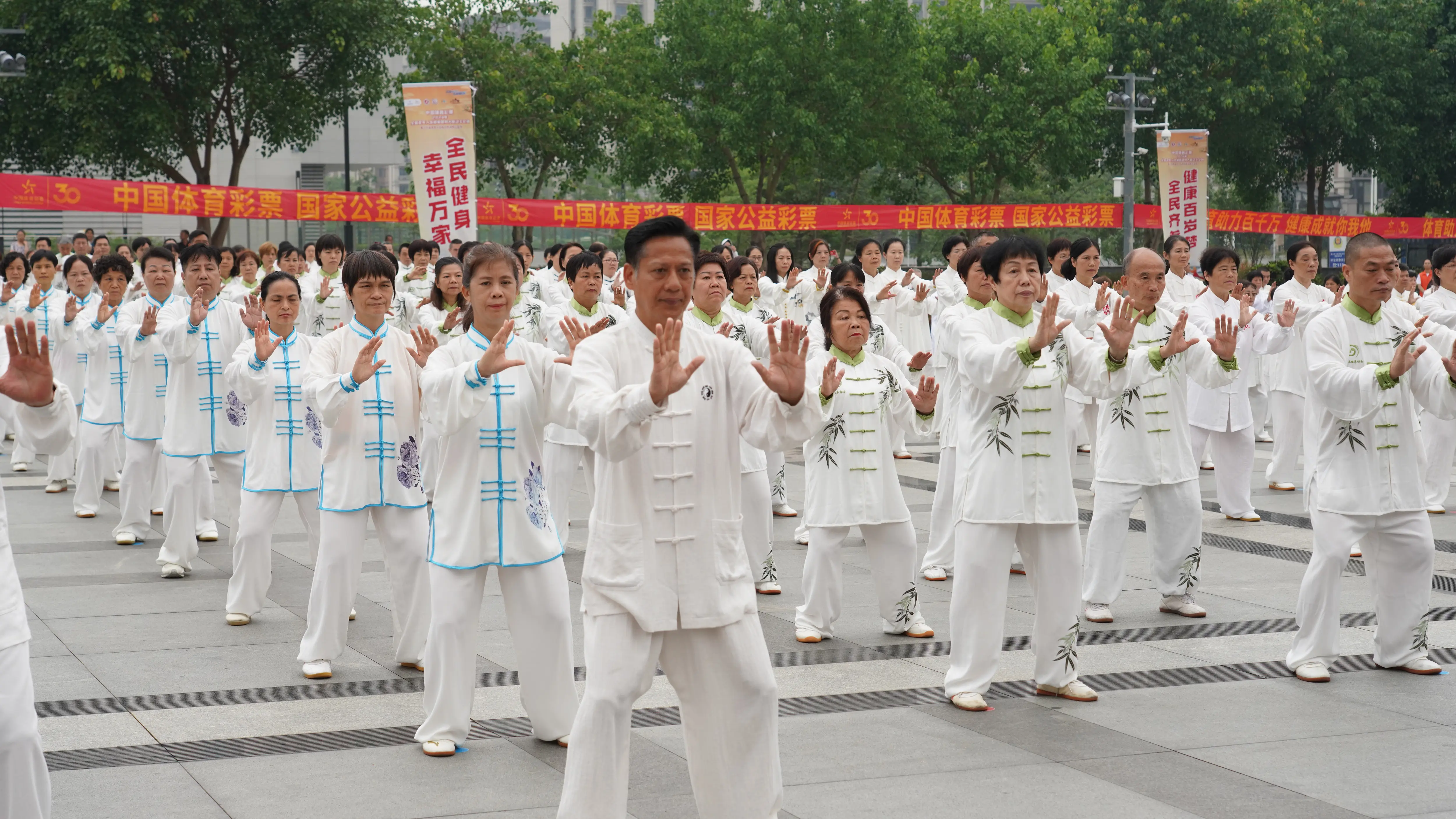
How many tai chi moves exist?
Different styles have different numbers of moves. Yang style, the most popular, has about 108 in its long form.
But don’t freak out about that big number! Lots are just repeats or tweaks of basic moves. Most newbies start with just 8-12 basic moves in short combos.
My first teacher said it best: It’s not how many moves you know, but how well you understand them. After 10 years, I’ve learned that knowing about 24 moves well is enough for good practice. Chen style has fewer moves (around 56) but they’re more powerful. No matter the style, practicing regularly is what counts. Even 10 minutes daily beats a long session once a week.
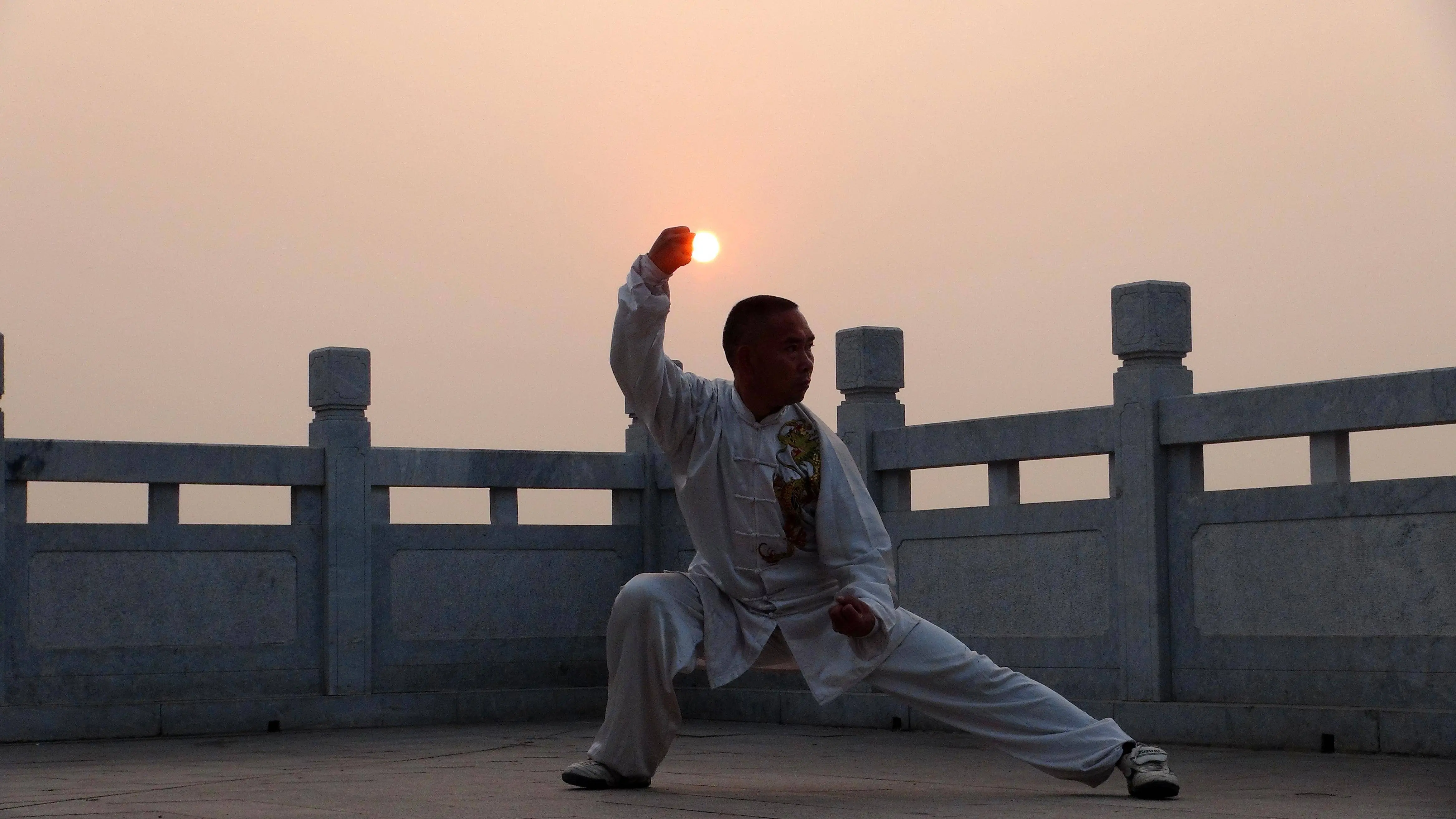
Which tai chi moves improve balance?
Some tai chi moves are great for balance, especially for seniors.
Golden Rooster on One Leg is probably the best-known balance move. In my senior classes, we might spend weeks on just this move, starting with chair support.
Wave Hands Like Clouds is another good one – you slowly shift weight side to side. Studies show doing these moves regularly can cut fall risk by nearly half for older folks. Brush Knee and Push helps balance and builds leg strength too. My student Martha, 72, says these moves really helped after her hip replacement. The slow moves train your body awareness – knowing where you are in space. Once you’re good at them, try doing them barefoot on grass for extra benefit.
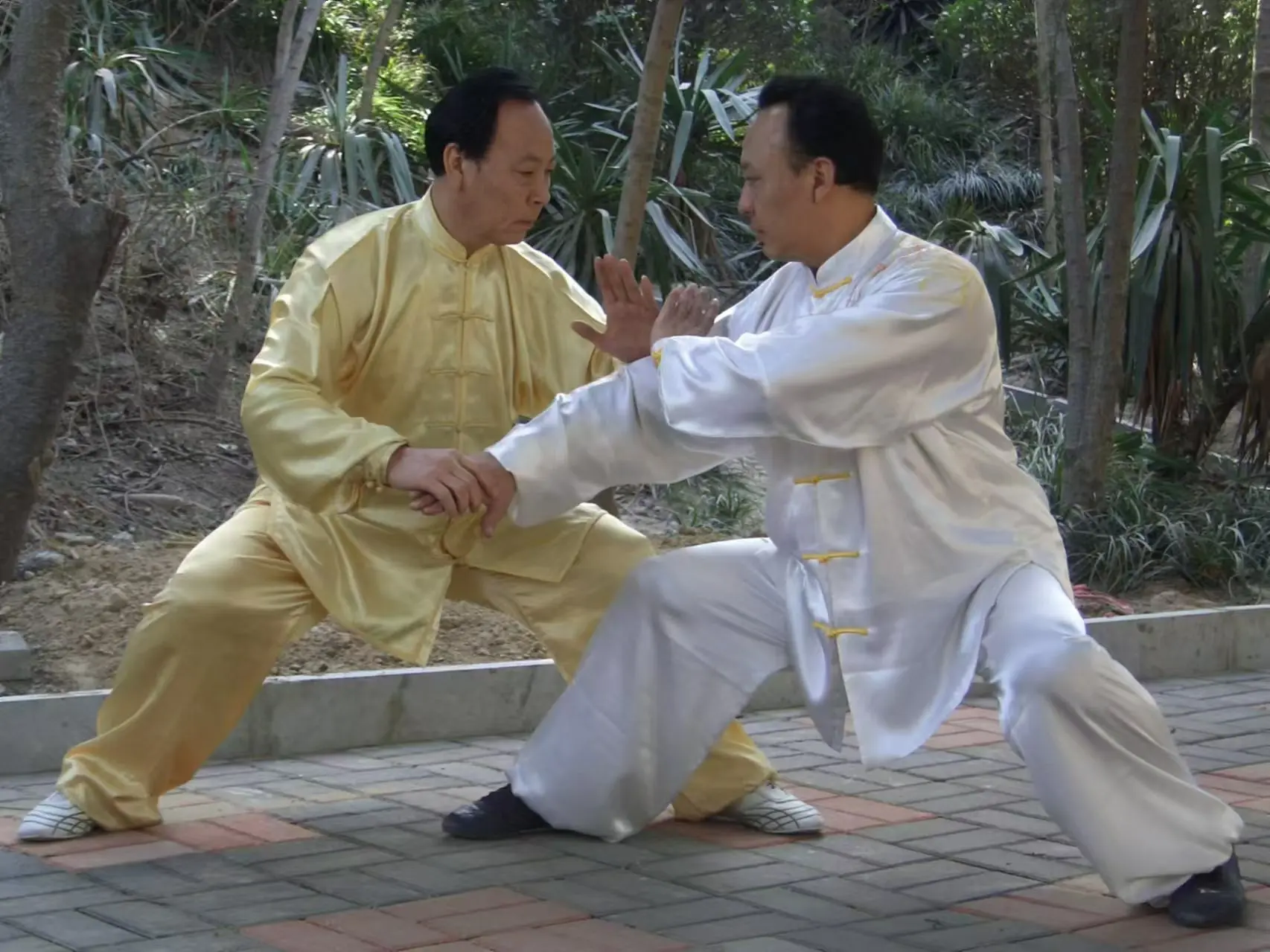
Are there tai chi moves for back pain?
Oh yeah! Tai chi works great for back pain.
Carry Tiger to Mountain gently stretches your back and strengthens muscles. I used this move myself to fix my office-worker back pain.
Snake Creeps Down is like yoga’s child pose but moving – great for spine relief. Harvard research found 12 weeks of tai chi cut chronic back pain by 30%. Just keep your alignment right – don’t tilt your pelvis forward (lots of people do). If your back really hurts, start with higher stances and go lower as you get stronger. Lots of physical therapists now use tai chi moves in rehab. Last month, a student said her doctor told her to do tai chi instead of harder exercises for her slipped disc.

What tai chi moves reduce stress?
They call tai chi moving meditation – some moves are super relaxing.
I love Cloud Hands for stress – the smooth, repeating motion really chills you out. The Closing Form at the end helps gather your energy and center you.
Science says these slow moves boost relaxing brain waves. Before my certification test, I did Standing Like a Tree daily. Harder than it sounds, but great for stress. Breathing with the moves (in with opening, out with closing) really helps you relax. One company swapped happy hour for tai chi and cut employee stress by 40%. Just five minutes can calm you down on a crazy day.

Can tai chi moves help with arthritis?
Doctors often suggest tai chi for arthritis.
Part the Wild Horse’s Mane loosens stiff joints gently. The Arthritis Foundation says this move is great for flexibility.
Fair Lady Works Shuttles is another good one – it eases shoulders and hips with gentle turns. Tufts research found tai chi cuts arthritis pain by 30-40% more than regular stretching. Many arthritis patients couldn’t make fists at first, but Fist Under Elbow helped them move hands better. Even just the warm-ups – wrist circles and finger stretches – help a lot. My student George, 80 with bad knee arthritis, went from walker to no help after six months of tai chi. Just adjust stances – wider for balance, not as low for knee comfort.
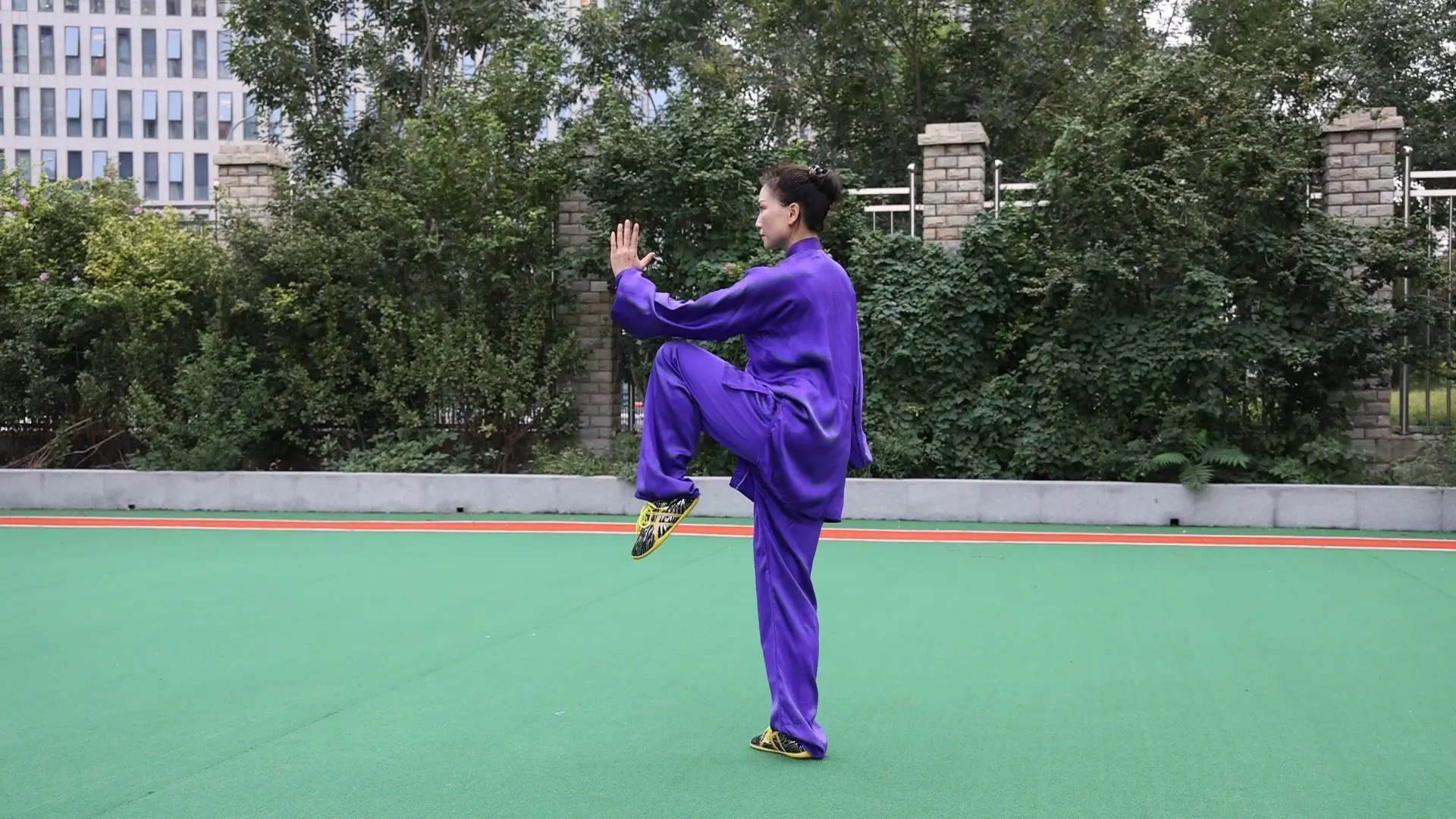
Which tai chi moves build strength?
Tai chi looks easy, but some moves really build strength done right.
Single Whip gives you killer leg endurance from holding low positions. When I first got this move right, my thighs hurt for days! Push Mountain strengthens your core with slow twists – way better than crunches.
One study found regular tai chi folks have legs as strong as swimmers. High Pat on Horse works upper back and shoulders – my posture got way better doing this. The trick is working muscles without obvious flexing. A construction guy in my class was amazed tai chi helped his lifting more than weights. For best strength gain, think martial arts – pretend you’re pushing against someone. This mental component activates more muscle fibers.
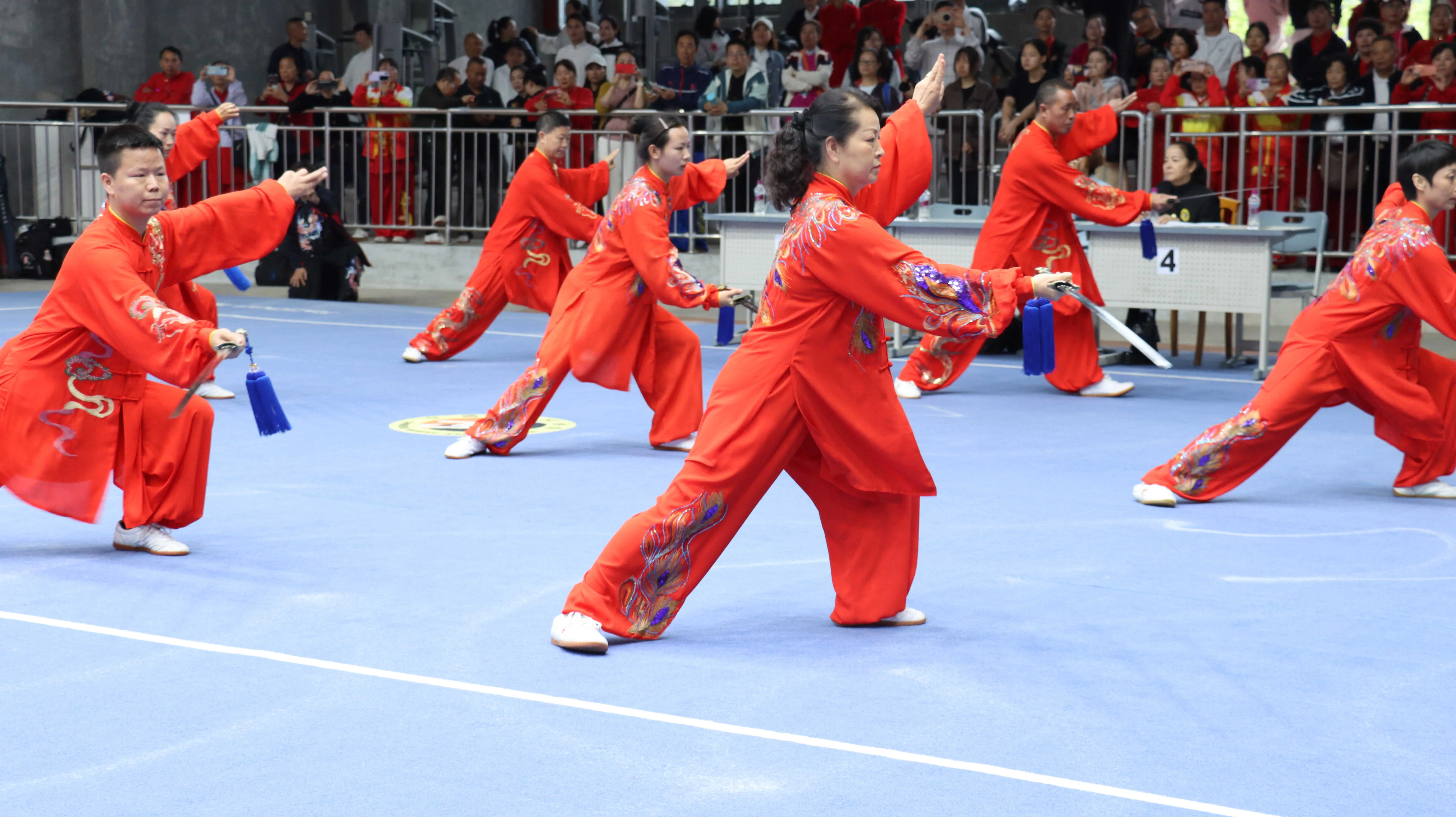
How do tai chi moves differ by style?
There are five main tai chi styles – Chen, Yang, Wu, Sun, and Hao – each different.
Chen style has sudden power moves like Buddha Pounds Mortar – nothing like Yang’s smooth moves. Training in Chen Village blew my mind – super low stances and quick power bursts.
Yang style, the most common, has big, pretty moves like White Crane Spreads Wings. Wu style is more compact with leaning – their Jade Lady Works Shuttles looks totally different. Sun style has special footwork like in Retreat to Ride Tiger. Start with Yang style – it’s easiest. Try others once you’ve got basics down. Fun fact: same move names can look totally different in other styles! My first multi-style class was eye-opening – Wu’s Play the Lute wasn’t what I knew! Trying different styles can really improve your tai chi.

What are advanced tai chi moves?
Advanced moves mix tricky coordination with inner energy work.
Step Back Repulse Monkey really tests your backward movement skills. Fly Obliquely involves intricate weight shifts that took me months to coordinate properly.
The most advanced moves often appear in competition forms – like Descending Single Whip where you sink extremely low while maintaining perfect alignment. After ten years of practice, I still find Dragon Plays with Water humbling – it requires simultaneous spiraling movements in arms and legs. Advanced practitioners also work on neigong (internal power) aspects – generating power from the dantian (energy center) rather than muscle. My teacher could knock me back with what looked like a gentle Push because of this internal skill. Weapons forms (sword, fan) introduce another layer of complexity. Remember though, advancement in tai chi isn’t about collecting fancy moves but deepening understanding – sometimes the simplest moves reveal new layers after years of practice.

Are there tai chi moves for weight loss?
While tai chi isn’t a high-calorie burner like running, certain moves can support weight loss when practiced vigorously.
Snake Creeps Down with deep stances becomes quite demanding – my heart rate monitor shows it’s comparable to brisk walking. Lotus Kick series raises the heart rate when performed continuously.
A Harvard study found that practicing tai chi for 45 minutes burns about 280 calories – similar to moderate swimming. The real weight loss benefits come from tai chi’s stress-reduction effects, which reduce cortisol-related abdominal fat. Many students in my weight management program find they naturally eat less after tai chi sessions because they’re more attuned to their bodies. Carry Tiger to Mountain done with power (imagine lifting something heavy) builds muscle that boosts metabolism. For best results, combine tai chi with dietary changes – the mindfulness cultivated through practice makes healthier eating choices easier. One student lost 30 pounds over a year by replacing her evening snacks with tai chi practice!
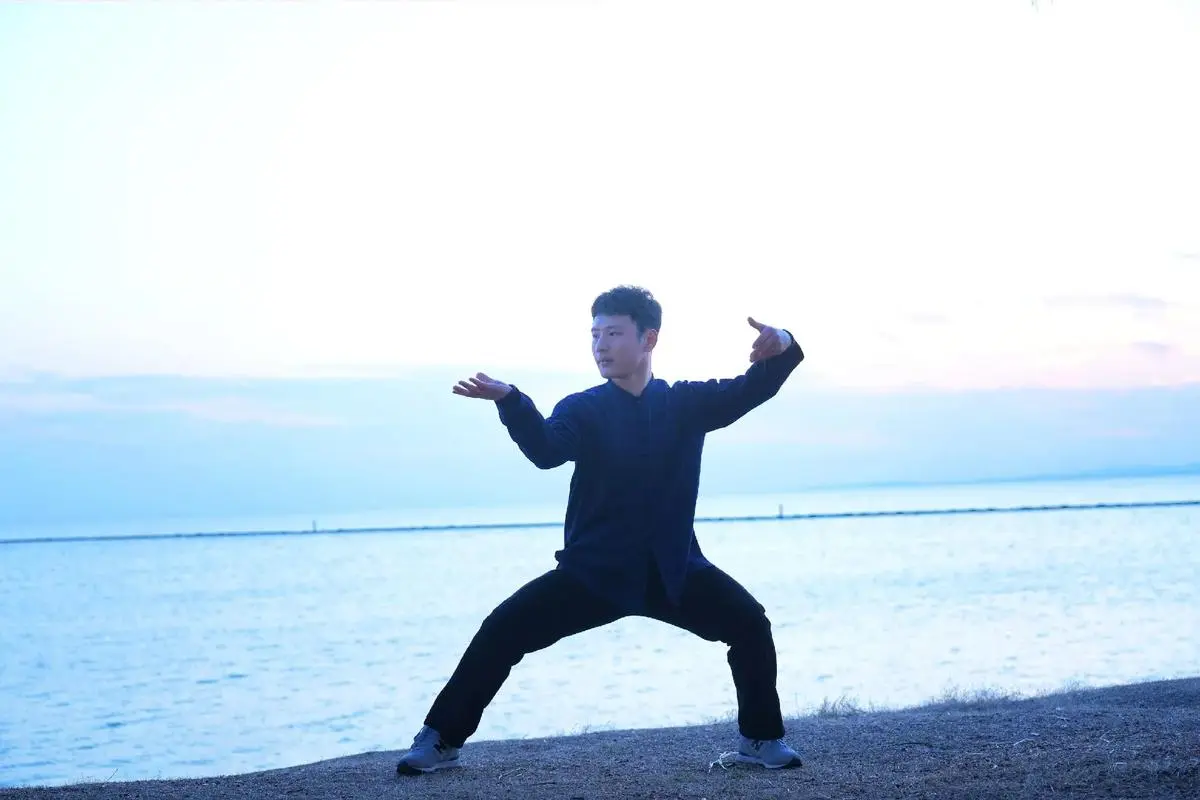
How to sequence tai chi moves properly?
Proper sequencing is crucial for tai chi’s health benefits and martial effectiveness.
Traditional forms have carefully arranged moves that balance yin and yang energies. For example, after an expansive move like White Crane Spreads Wings, you’ll typically find a contracting move like Brush Knee.
When I first learned to teach, my mentor had me practice sequencing by creating short 5-move mini-forms – an excellent exercise I still use. A basic principle: alternate left and right sides, and balance forward/backward/sideways movements. The opening sequence of most styles – Commencement, Grasp Sparrow’s Tail, Single Whip – establishes this balance. Modern research confirms this intelligent sequencing provides full-body integration. For home practice, I recommend beginners learn a short 8-move sequence rather than isolated moves. My morning routine is a simple sequence: Commencement, Ward Off, Roll Back, Press, Push, Single Whip, Lift Hands, Closing. This takes just 10 minutes and covers all major movement patterns.
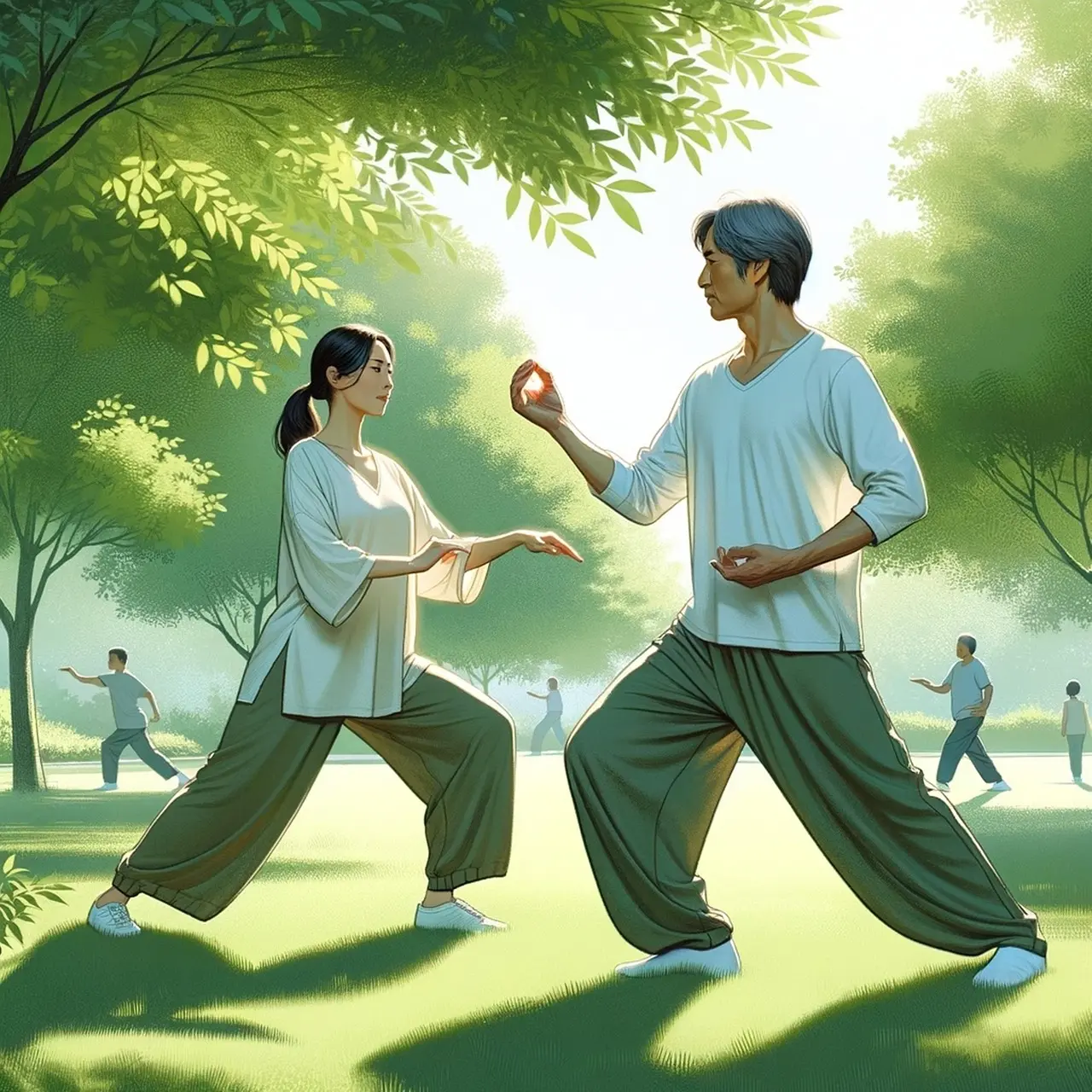
Can tai chi moves be modified for injuries?
Tai chi is wonderfully adaptable for various physical limitations.
For knee issues, raise stances – Snake Creeps Down can be done standing upright initially. Shoulder injuries may require reducing arm elevation in Push Mountain.
I’ve worked with wheelchair users who practice modified upper-body versions of Cloud Hands. The key is maintaining the movement’s essence while adjusting range. After my student Mark had rotator cuff surgery, we focused on lower-body moves initially, gradually reintroducing arm movements. Many moves can be done seated – Wave Hands Like Clouds becomes a wonderful torso rotation exercise. For balance-challenged individuals, practicing near a wall or chair provides security. The beauty of tai chi is that even simplified versions provide benefits. My oldest student, 92-year-old Florence, does her entire practice seated but still experiences improved circulation and mental clarity. Always consult your healthcare provider, but in my 15 years of teaching, I’ve yet to encounter someone who couldn’t benefit from appropriately modified tai chi.
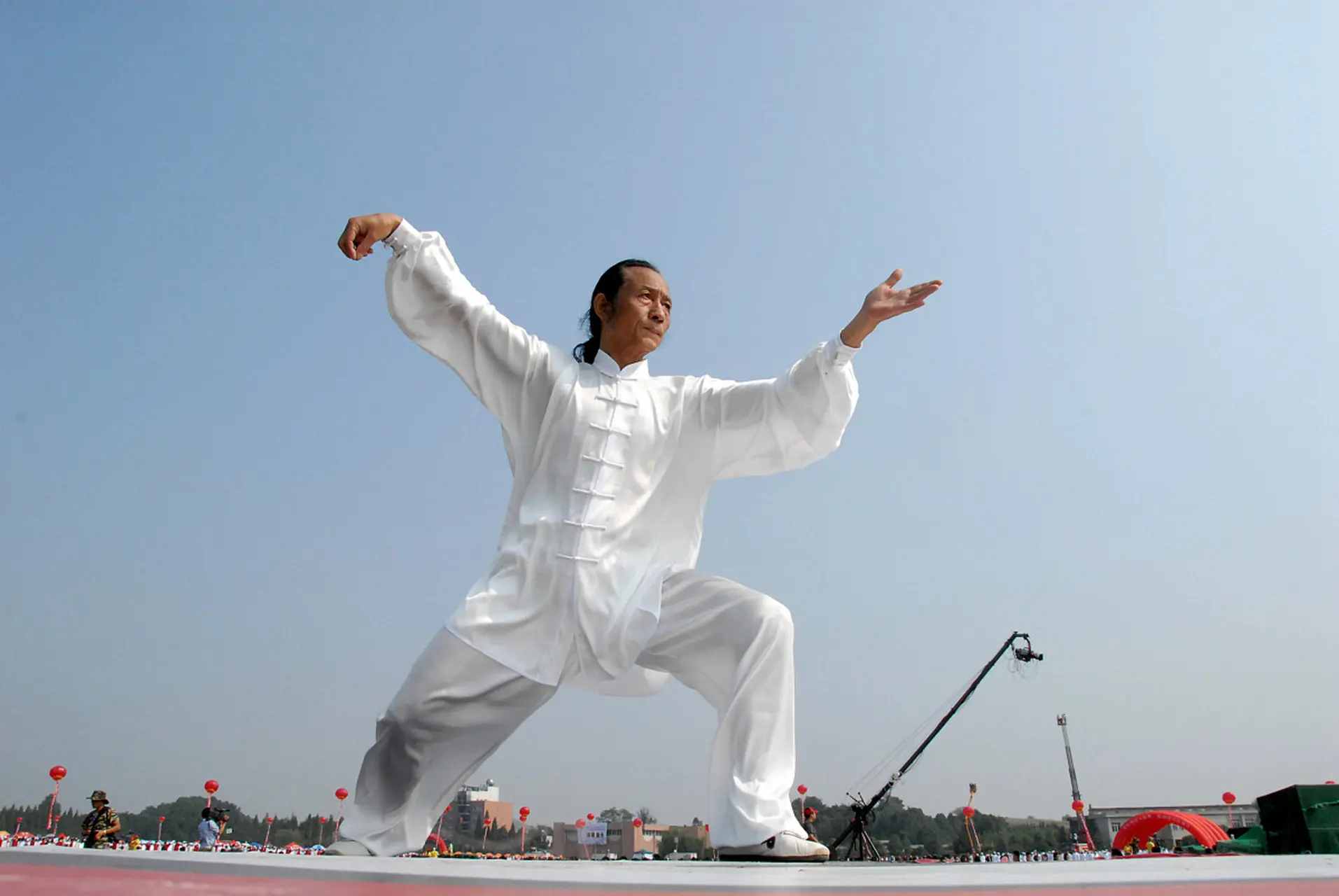
What are common mistakes in tai chi moves?
Even after years of practice, certain mistakes creep in.
The most common is improper weight distribution – many beginners keep weight centered when it should be 70/30 or 100/0 in certain moves. My teacher used to poke our thighs to check if muscles were engaged! Another frequent error is double weighting – having equal weight on both feet, which limits mobility.
Breathing mistakes include holding breath or reversing the natural flow (inhaling when should exhale). I still catch myself sometimes raising shoulders in Lift Hands – a habit from computer use. Rushing through moves is another pitfall – tai chi should flow like honey, not water. Students often focus so much on arms they forget the legs are the foundation. Video recording yourself can reveal these issues – when I first saw myself doing Single Whip, I realized my hips weren’t squared properly. Regular corrections from a qualified teacher are invaluable – I get tune-ups at workshops even after 15 years. Remember, tai chi is a process of continual refinement, not perfection.
Tai chi offers a wealth of movements suitable for every age and ability level.
Whether you’re seeking stress relief, better balance, or a gentle workout, there’s a set of tai chi moves perfect for your needs. Remember that consistency matters more than complexity – even practicing just a few basic moves daily can yield significant benefits.
Why not start today? Find a local class or follow along with a reputable online tutorial. Your future self will thank you for beginning this rewarding practice that nurtures both body and mind. As my first teacher told me, The best time to plant a tai chi tree was 20 years ago – the second best time is now.
